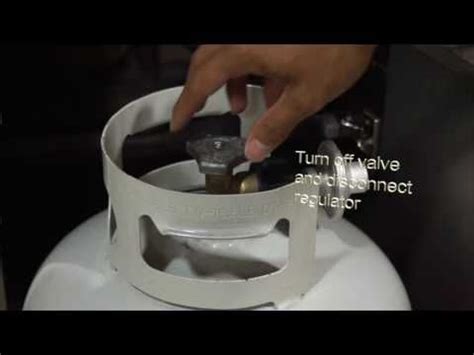The Only Guide You'll Ever Need for Propane Tank Resetting
Propane tanks are a convenient and efficient source of fuel for various applications, from grilling and heating to powering RVs and generators. However, sometimes you might encounter a situation where your propane tank seems to be malfunctioning, indicated by a lack of gas flow despite having a full tank. This often leads to the need for a "reset," although the term is somewhat misleading. This comprehensive guide will clarify what a propane tank "reset" actually entails, when it's necessary, and how to safely perform the process.
Understanding Propane Tank "Resetting": It's Not What You Think
The term "propane tank reset" is a common colloquialism. It doesn't involve any internal resetting of a mechanism within the tank itself. Instead, it typically refers to troubleshooting issues that prevent propane from flowing to your appliance. These issues usually stem from problems with the regulator, the hose, or the appliance connection itself.
What Causes a Propane Tank to Seem "Stuck"?
Several factors can lead to the impression that your propane tank needs a "reset":
- Frozen Regulator: In cold weather, the regulator can freeze, restricting gas flow.
- Clogged Regulator or Hose: Debris or ice can clog the regulator or the hose connecting the tank to the appliance.
- Faulty Regulator: A malfunctioning regulator may need replacement.
- Low Tank Pressure: Although you might think the tank is full, it could be low on propane. Consider checking the gauge.
- Blocked Appliance Connection: The connection point on your appliance might be clogged or improperly connected.
Troubleshooting Steps: Your Propane Tank "Reset" Guide
Before assuming anything is wrong with the tank, systematically check the following:
1. Check the Propane Tank Gauge
A simple first step is to check the gauge on your propane tank. If the gauge indicates the tank is empty or near empty, the issue isn't a "reset" problem but simply that you need a refill.
2. Inspect the Regulator for Ice or Obstructions
Carefully examine the regulator for any signs of ice buildup. If ice is present, allow the regulator to thaw naturally or use warm (not hot) water to gently melt the ice. Avoid using a flame. Also, inspect the regulator for any signs of damage or debris.
3. Check the Hose for Kinks or Blockages
Examine the hose connecting the tank to the appliance. Look for kinks, cracks, or any obstructions that may be restricting gas flow. Replace a damaged hose immediately.
4. Inspect the Appliance Connection
Check the connection point on your appliance. Ensure it's clean, free from debris, and securely attached.
5. Verify the Gas Flow
After completing the above steps, attempt to use your appliance again. If the problem persists, the issue is likely beyond a simple "reset" and could require professional attention.
When to Call a Professional
If you've followed the above steps and your propane tank still isn't working correctly, it's best to contact a qualified propane technician. Attempting to repair or tamper with the tank or regulator beyond basic checks can be dangerous. Professional help is crucial in situations involving:
- Significant Regulator Damage: A damaged regulator can pose a safety risk and should be replaced by a professional.
- Persistent Gas Leaks: If you suspect a gas leak, evacuate the area immediately and contact emergency services.
- Uncertainties About the Problem: If you're unsure about the cause of the malfunction, professional advice is essential to prevent further issues and ensure safety.
Safety Precautions
- Always work in a well-ventilated area. Propane is heavier than air and can accumulate in low-lying areas.
- Never use a flame near the regulator or hose.
- If you smell propane, evacuate the area immediately and contact emergency services.
- Never attempt to repair or modify the propane tank or regulator yourself unless you are a qualified technician.
This guide provides a comprehensive overview of how to troubleshoot propane tank issues often referred to as "resetting." Remember that safety should always be your top priority when handling propane. By following these steps and knowing when to seek professional help, you can safely and effectively resolve most propane tank problems.

